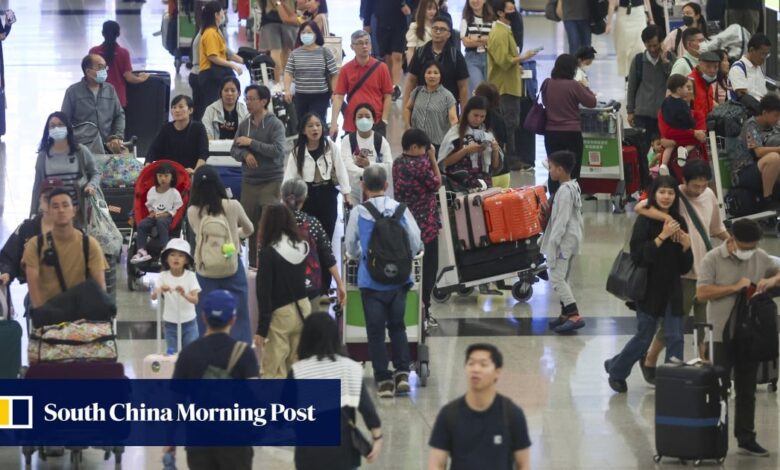Hong Kong moves up list of Asia-Pacific’s busiest airports, but still behind Singapore Changi, Seoul Incheon and Bangkok

[ad_1]
Hong Kong’s airport handled 24.3 million passengers, just under half the pre-pandemic number, while Taiwan Taoyuan Airport was fifth with 21.8 million passengers, which was a recovery rate of 67 per cent.
The city only eased its restrictions last December, and allowed quarantine-free travel with mainland China in February.
The Airport Authority, which runs the airport, had projected that passenger traffic would return to 80 per cent of pre-pandemic levels by the end of the year, with full recovery by the close of next year. In August, Hong Kong reached 67 per cent of its pre-pandemic levels.

Association of Asia Pacific Airlines director general Subhas Menon said the region’s airlines carried 171 million international passengers during the first eight months of the year, just more than two-thirds of the number for the same period in 2019.
Noting that competition was intensifying globally, he said in a statement on Thursday that Asian airlines remained focused on increasing productivity.
Aviation analyst Brendan Sobie said it was encouraging to see the same top five airports were back in the rankings in August, as North Asian airports recovered traffic levels.
In August, Seoul’s Incheon overtook Singapore’s Changi Airport for the first time this year. Hong Kong’s airport was the third-busiest every month from May to August.
Recovery of Hong Kong’s aviation industry ‘in sight’; city pursues air service deals
Recovery of Hong Kong’s aviation industry ‘in sight’; city pursues air service deals
Sobie said it would take time for Hong Kong to close the gap with Singapore, as the former’s 3.99 million passengers in August were more than a million behind Changi’s 5.15 million.
While next year was difficult to predict, he said “there is a chance that Hong Kong could come back to No 1”.
He added that the final stretch of recovering to pre-pandemic levels would be the most difficult, noting that Singapore and Bangkok had opened up earlier and seen traffic plateau in recent months.
Staffing shortages at airports and airlines, supply chain issues and fleet constraints were among the hurdles in the way to returning to pre-pandemic levels, he added.
Hong Kong’s first batch of imported airport staff to start work earliest December
Hong Kong’s first batch of imported airport staff to start work earliest December
That view was echoed by Xie Xingquan, IATA’s regional vice-president for North Asia, who told the Post that supply side challenges would hinder airlines’ ability to add back capacity to serve strong travel demand.
He said these included a worldwide shortage of spare parts for aircraft, delays in the delivery of new planes, backlogs in aircraft maintenance and servicing, and a shortage of skilled workers including pilots and flight attendants.
Senior lecturer Andrew Yuen Chi-lok, of Chinese University’s Aviation Policy and Research Centre, said Hong Kong’s labour shortage remained the “major issue”.
There are about 53,000 workers at Hong Kong’s airport, a third fewer than the 78,000 employed before the Covid-19 pandemic.
[ad_2]
Source link





